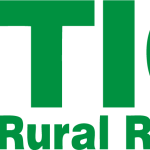Alfalfa is the third-most grown crop in Saline, Jefferson, and Gage counties with approximately 16,500 acres. Given the current drought and hay price, I expect demand for alfalfa to remain strong. Protecting your fields from insect damage will be important. Last year, I received my first call on April 30 about alfalfa weevil and the calls kept coming until May 18. Since we can see alfalfa spring growth from the road and with soil temperatures finally warming up, it will soon be time to start scouting for one of our early spring insects, alfalfa weevil.
Alfalfa will soon be tall enough (about 8 inches) to use a sweep net to see if alfalfa weevil larvae are present in a field. Farmers in Saline, Jefferson, and Gage counties can borrow or check out an insect sweep net to help determine if they have alfalfa weevil. Our extension offices are at the following locations and hours:
- Wilber at 306 W 3rd St, open weekdays from 8:00 am – 4:30 pm
- Fairbury at 517 F St, open weekdays from 9:00 am – Noon & 1:00 – 5:00 pm
- Beatrice at 1115 W Scott, open weekdays from 8:00 am – 4:30 pm

In addition to a sweep net, you will need to bring a tall bucket, pruning shears, tape measure, pocket notepad, and pen/pencil with you to the field. Alfalfa weevil larvae are a pale yellowish green legless worm with a black head and a white stripe down the back (Figure 1). Larvae are small at 1/16 to 3/8 inch long. If you find alfalfa weevil larvae with the sweep net, then put the sweep net back and grab your other scouting tools. Select five random spots across the field and at each spot use a pruning shears to cut 10 stems off at the soil surface or crown. Shake the larvae off the stems by hitting the stems on the inside of the bucket. Check that you dislodged all the larvae including small larvae in the folded leaf tips. Write down the average stem length and the number of larvae per spot. Repeat these steps at all five spots. Determine the average number of alfalfa weevil larvae per stem and stem height across the five spots.
The economic threshold varies by stem height, growth stage, treatment cost, hay price, and larvae per stem. View the economic threshold table at https://cropwatch.unl.edu/2021/scouting-advised-alfalfa-weevil. For example, if alfalfa is 10 inches tall, $12 per acre treatment cost, $175 per ton hay price, then 1.5 alfalfa weevil larvae per stem is the economic threshold to treat. There are numerous effective insecticides for controlling alfalfa weevil larvae. However, products with the active ingredient indoxacarb do not harm most beneficial insects and natural enemies, but control alfalfa weevil larvae.
For more information, read the full CropWatch article written by our Extension Entomologists at https://cropwatch.unl.edu/2021/scouting-advised-alfalfa-weevil and feel free to contact me at or 402-821-1722. Also, contact me if you are interested in participating in a new UNL alfalfa weevil larvae collection study. Know your crop, know your tech, know your bottom line at croptechcafe.org.


